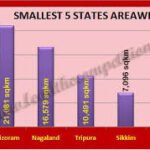India has officially become the largest milk producer in the world, surpassing all other nations in dairy production. This milestone reflects the country’s strong agricultural base, efficient dairy farming techniques, and government initiatives aimed at enhancing milk production. With a significant contribution to the global dairy market, India accounts for over 24% of the world’s total milk output.
Factors Contributing to India’s Dairy Growth
Government Initiatives & Policies
The Indian government has implemented various policies and schemes to boost milk production, such as the National Dairy Plan (NDP), Rashtriya Gokul Mission, and Dairy Entrepreneurship Development Scheme (DEDS). These initiatives have helped improve breeding techniques, animal healthcare, and farmer welfare.
Role of Cooperatives
Organizations like Amul, Mother Dairy, and Nandini have played a crucial role in strengthening India’s dairy sector. The cooperative model has empowered millions of small-scale farmers, ensuring fair pricing and steady income.
Technological Advancements
The adoption of advanced dairy farming techniques, including automated milking systems, artificial insemination, and genetic improvement programs, has significantly increased milk yield and quality.
Challenges Faced by India’s Dairy Industry
Quality Control Issues
Despite being the largest producer, India faces challenges in milk quality and adulteration. The Food Safety and Standards Authority of India (FSSAI) is actively working to implement stricter regulations and ensure quality control.
Climate Change Impact
Unpredictable weather patterns and rising temperatures affect cattle health and fodder availability, leading to fluctuations in milk production.
Small-Scale Farmer Struggles
A large portion of India’s milk comes from small-scale farmers who often lack access to advanced resources and infrastructure. Providing adequate training and financial support is crucial for sustaining production growth.
Future Goals for the Dairy Sector
Enhancing Milk Processing Infrastructure
Investing in modernized milk processing plants and cold storage facilities will help reduce wastage and improve the supply chain.
Strengthening Export Potential
India aims to increase dairy exports by improving processing standards and meeting international quality benchmarks.
Promoting Sustainable Dairy Farming
Encouraging eco-friendly dairy farming practices, such as reducing methane emissions and improving cattle nutrition, will ensure long-term sustainability in the sector.

Why This News is Important
Economic Growth & Employment
India’s dairy industry is a major contributor to the economy, generating employment for over 80 million rural households. This growth directly impacts farmers’ incomes and rural development.
Global Dairy Influence
By becoming the world’s top milk producer, India strengthens its position in global dairy trade, opening opportunities for increased exports and international collaborations.
Food Security & Nutrition
Milk is a staple source of nutrition for millions of Indians, and increasing production ensures affordable access to dairy products, contributing to national food security.
Historical Context: Evolution of India’s Dairy Industry
Operation Flood
India’s dairy success began with Operation Flood (1970-1996), led by the National Dairy Development Board (NDDB). It transformed India from a milk-deficient country to a self-sufficient dairy nation.
White Revolution
Dr. Verghese Kurien, the father of the White Revolution, played a pivotal role in scaling up dairy production and establishing cooperatives like Amul.
Expansion of Dairy Infrastructure
Over the decades, India has invested in modern dairy infrastructure, research, and breeding programs to enhance production efficiency and sustainability.
Key Takeaways from India’s Dairy Leadership
| S. No | Key Takeaway |
|---|---|
| 1 | India is now the world’s largest milk producer, contributing over 24% of global milk output. |
| 2 | Government initiatives like NDP, Rashtriya Gokul Mission, and DEDS have played a crucial role in dairy sector growth. |
| 3 | Challenges such as quality control, climate change, and small-scale farmer struggles need urgent attention. |
| 4 | India is working on enhancing milk processing, export potential, and sustainable dairy farming. |
| 5 | Historical efforts like Operation Flood and the White Revolution laid the foundation for India’s dairy success. |
FAQs: Frequently Asked Questions
1. Which country is the largest milk producer in the world?
India has become the world’s top milk producer, surpassing other countries like the United States and China.
2. What are the major challenges faced by the dairy industry in India?
The Indian dairy industry faces challenges such as fluctuating fodder prices, inadequate cold storage infrastructure, and the impact of climate change on milk production.
3. What are the key government initiatives supporting the dairy sector in India?
Government schemes like the Rashtriya Gokul Mission, National Programme for Dairy Development, and Animal Husbandry Infrastructure Development Fund support the dairy sector in India.
4. What is the contribution of the dairy sector to India’s economy?
The dairy sector contributes around 5% to India’s GDP and provides livelihoods to millions of rural farmers.
5. What are the future goals for India’s dairy industry?
Future goals include increasing milk productivity, expanding cold storage and processing infrastructure, and improving the quality of dairy products for global exports.
Some Important Current Affairs Links


















 Exciting News!
Exciting News!  Join Our Telegram Channel Now!
Join Our Telegram Channel Now!
 Join our Telegram channel for a thrilling adventure into the world of daily current affairs.
Join our Telegram channel for a thrilling adventure into the world of daily current affairs. 
 Don’t miss out on the latest updates and insights! Click to join now and be part of the knowledge revolution!
Don’t miss out on the latest updates and insights! Click to join now and be part of the knowledge revolution! 
